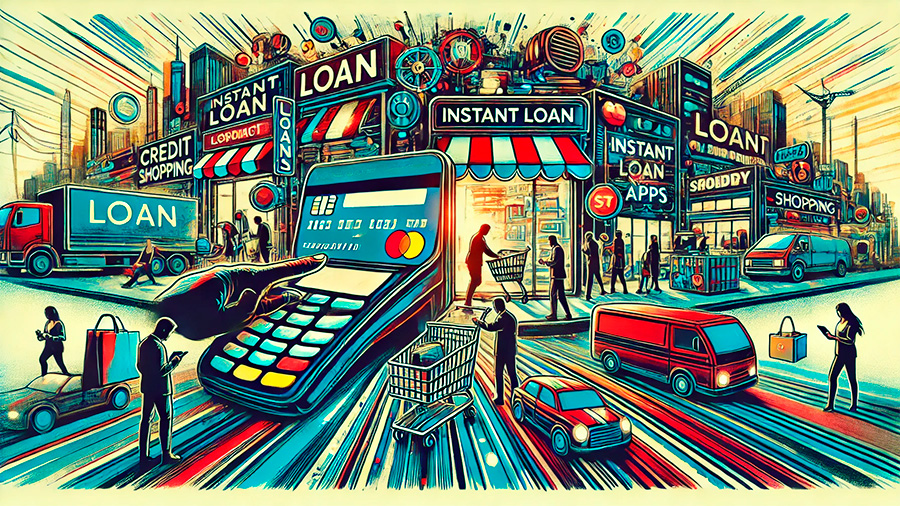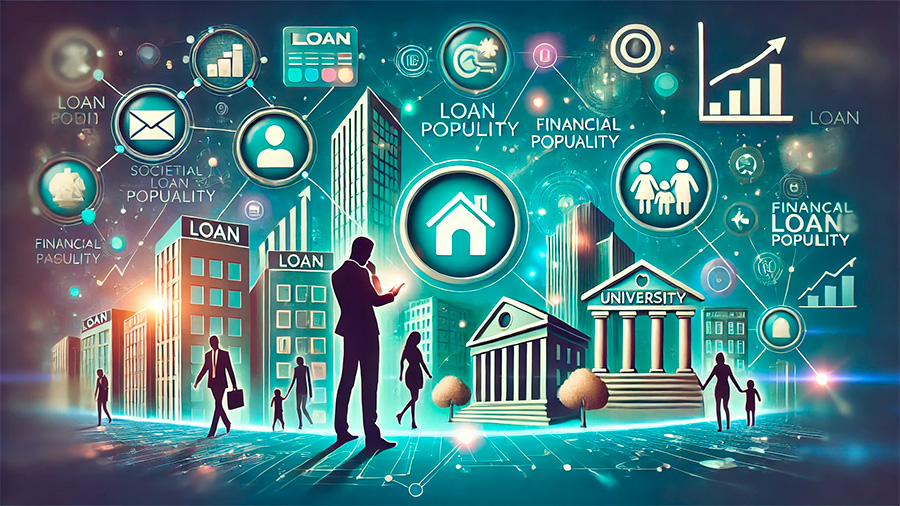In recent years, there has been a notable increase in the demand for loans across various sectors in the United States. From personal loans to mortgages and business financing, Americans are increasingly turning to borrowed funds to meet their financial needs. Understanding the key factors driving this trend is essential for grasping the broader economic landscape. This article explores the causes behind the growing popularity of loans in America and the societal trends influencing this financial choice.
The Key Factors Behind Increased Loan Demand
Several interconnected factors have contributed to the rising popularity of loans in America. These factors encompass economic conditions, consumer behavior, and the availability of credit.
1. Low-Interest Rates
Historically low-interest rates have made borrowing more attractive for consumers and businesses alike. When interest rates are low, the cost of borrowing decreases, encouraging individuals to take out loans for various purposes.
Impact of low-interest rates:
- Affordable monthly payments: Lower interest rates result in reduced monthly payments, making loans more manageable for borrowers.
- Increased borrowing capacity: Consumers are more likely to borrow larger amounts when interest rates are favorable, leading to increased demand for loans.
2. Economic Recovery and Growth
The U.S. economy has experienced a gradual recovery following the financial crisis of 2008, leading to increased consumer confidence. As the economy stabilizes, individuals and businesses feel more secure in their financial decisions, resulting in a greater willingness to take on debt.
Effects of economic recovery:
- Increased consumer confidence: A stronger economy encourages individuals to invest in homes, education, and businesses, often requiring financing.
- Higher spending power: As income levels rise, consumers are more likely to borrow for major purchases, fueling loan demand.

3. Changing Consumer Behavior
In today’s fast-paced world, many consumers prefer immediate access to goods and services rather than saving for long periods. This shift in consumer behavior has led to an increased reliance on loans to fund purchases.
Trends in consumer behavior:
- Instant gratification: The desire for instant gratification drives consumers to seek loans for immediate needs, such as home renovations, vacations, and consumer electronics.
- Convenience of online lending: The rise of online lending platforms has made the loan application process quicker and more accessible, appealing to a tech-savvy consumer base.
4. Access to Credit
The expansion of credit options, including personal loans, peer-to-peer lending, and credit cards, has made it easier for consumers to obtain financing. Financial institutions are increasingly offering a variety of loan products tailored to different needs, enhancing accessibility.
Benefits of increased credit access:
- Diverse lending options: Consumers can choose from various loan types, including secured, unsecured, and revolving credit, based on their financial situation.
- Flexible terms: Many lenders now offer flexible repayment terms, making it easier for borrowers to find loans that fit their budgets.
Societal Trends Influencing Loan Popularity
Beyond economic factors, several societal trends have shaped the growing reliance on loans among Americans. Understanding these trends provides insight into the evolving financial landscape.
1. Rising Education Costs
As the cost of education continues to rise, many students and families turn to student loans to finance higher education. The need for advanced degrees in a competitive job market has increased the demand for education-related loans.
Consequences of rising education costs:
- Increased student debt: Many graduates enter the workforce burdened with substantial student debt, leading to a greater focus on repayment strategies and financial planning.
- Impact on homeownership: High levels of student debt can affect the ability to secure mortgages, impacting homeownership rates among young adults.

2. Homeownership Trends
Homeownership remains a key component of the American dream, driving demand for mortgage loans. As millennials and younger generations seek to purchase homes, the housing market continues to experience fluctuations influenced by borrowing.
Trends in homeownership:
- Millennial homebuyers: The growing number of millennials entering the housing market has contributed to increased demand for mortgage loans.
- Low inventory: Limited housing inventory can lead to competition, prompting buyers to secure loans quickly to capitalize on available properties.
3. Business Investment and Entrepreneurship
With a growing entrepreneurial spirit, many individuals are seeking loans to start or expand their businesses. Access to funding is crucial for entrepreneurs looking to invest in their ventures and contribute to economic growth.
Impact of entrepreneurship on loan demand:
- Small business growth: Increased demand for business loans supports small business development, creating jobs and stimulating local economies.
- Innovation and competitiveness: Entrepreneurs rely on loans to invest in new ideas and technologies, driving innovation across industries.
4. The Influence of Social Media and Marketing
Social media platforms and targeted marketing have played a significant role in shaping consumer behavior and attitudes toward borrowing. Influencers and marketing campaigns often promote the benefits of loans, encouraging individuals to consider financing options.
Effects of social media on borrowing:
- Increased awareness: Social media marketing raises awareness of loan products and financial services, making them more accessible to a wider audience.
- Peer influence: Recommendations and testimonials from peers can influence individuals’ decisions to seek loans for various purposes.
Conclusion
The growing popularity of loans in America is driven by a combination of economic factors and societal trends. Low-interest rates, economic recovery, changing consumer behavior, and increased access to credit have all contributed to the rising demand for loans. Additionally, societal influences such as rising education costs, homeownership trends, entrepreneurship, and social media marketing have further shaped borrowing habits.
For individuals and businesses, understanding these factors is essential for making informed financial decisions. By leveraging loans wisely, borrowers can achieve their financial goals and contribute to a more dynamic and resilient economy.
